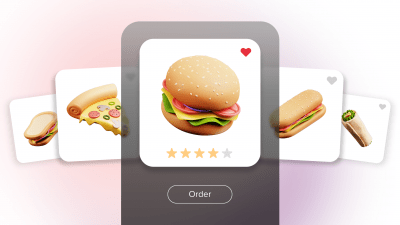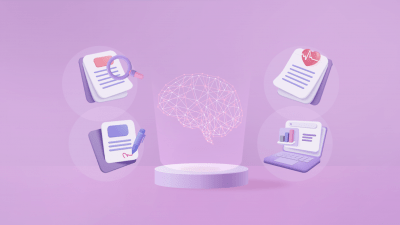Last Updated on: 29th April 2024, 11:59 am
Marketing and types of digital advertising are constantly in motion If advertisers fail to leverage tools to adapt to these trends, they could find themselves being left behind.
In this article you will learn about:
- The role played by 3rd-party cookies
- The alternatives for 3rd-party cookies
- The ways of adapting to market changes
Table of Contents:
- 3rd-party tracking cookies underpinned the digital advertising ecosystem
- What alternatives and examples of digital advertising are there?
- The key is interpreting the data and combining methodologies
- RTB House has been utilizing Deep Learning in 100% of its campaigns since 2017
- The best time to adopt new ad-tech solutions is today
The biggest threat to any business is failure to adapt to change. Markets and customers are changing faster than ever, and traditional tools are no longer as effective as they once were when compared with the digital advertising intelligence we are seeing today. A business’ success will largely depend upon how well it adapts to these changes.
To understand the scale of the challenge and what digital advertising is, let’s take a look at one of the biggest changes in the digital advertising landscape today: Google’s moves to retire 3rd-party tracking cookies.
3rd-party tracking cookies underpinned the digital advertising ecosystem
The writing has been on the wall for 3rd-party tracking cookies for a while now. Many major browsers, such as Firefox and Edge, had already removed them without providing any alternatives. Even before Google announced their decision to retire 3rd-party tracking cookies, leading AdTech providers, like RTB House, had already begun working on solutions to these digital advertising challenges.
The crux of the challenge is that 3rd-party tracking cookies contain significant amounts of rich data and digital advertising intelligence. Advertisers were able to use this data to ensure that users received ads that they were most likely to positively interact with.
Google has recently delayed the retirement of 3rd-party tracking cookies, but that doesn’t mean that advertisers can be complacent. This is an opportunity to build solutions in digital media advertising that we need tomorrow, today.
What alternatives and examples of digital advertising are there?
There are three main solutions that AdTech companies are working on. One option is to improve on existing context marketing methods. This means ensuring that adverts appear on sites that users’ advertisers want to reach are already using. This is challenging to do effectively due to the sheer amount of content online, and traditional machine learning or human-led solutions are no longer sufficient.
Another solution comes from Google themselves. The company has created an anonymized intelligent advertising alternative to 3rd-party tracking cookies, called the Google Privacy Sandbox. You can find out more about the project here. RTB House has been actively involved in the development of this system, and was the first Demand-Side Platform to successfully use the system to globally buy real advertising impressions.
The final digital advertising example is Individual Targeting, relying on other than third-party cookie ways of identifying an individual across the web. Two most common ones are universal deterministic and probabilistic identifiers. The former requires taking a piece of personally identifiable information (PII), such as an email address or login data, to recognize an individual across various websites and devices. Probabilistic identifiers take advantage of all available non-deterministic data points, such as the version of the user’s browser, IP address and many others, to combine them and fingerprint the individual using statistical modelling. There are other tools which can be used here for specific use cases, like Publisher Provided IDs, which can be used by publishers to create custom audiences.
The key is interpreting the data and combining methodologies
The challenge with all of these types of digital advertising solutions is understanding the data itself. Human and machine learning led methods will either struggle with the sheer quantity of available data, or the complexity of these newer datasets. This is where the next generation of machine learning solutions comes into play: Deep Learning.
Unlike machine learning algorithms, Deep Learning algorithms are able to process significantly more complicated, even unstructured, datasets. They do this by processing data through a series of increasingly complicated layers.
For example, the first layer may place a user into a specific group, the second layer will then attempt to define specific niches or interests, and the third layer may attempt to identify what stage of the sales funnel this user is in.
Another advantage is that this means that Deep Learning algorithms are able to identify patterns without pre-set parameters from a human operator. This means that it can operate far more flexibly than legacy solutions, and it allows us to leverage the best of all available targeting methodologies to maximize results for our clients.
RTB House has been utilizing Deep Learning in 100% of its campaigns since 2017
We are well aware of the benefits of Deep Learning in digital media advertising, because we use it in everything we do. Since 2017 RTB House has leveraged Deep Learning to great effect in 100% of our active campaigns.
Take the digital advertising example of context marketing. Our ContextAI solution enables RTB House to identify high-quality websites, in over 41 languages, while keeping brand safety at the core of the project. We have a database that encompasses 95% of the internet, and Deep Learning enables us to target the right sites, for the right advert.
Deep Learning is the underpinning of this technology, as it enables us to better understand context. Rather than relying on a set of keywords, ContextAI Deep Learning algorithms use inflection to find and identify similar subjects, and assign ads to that site. This significantly broadens the number of potential publishers a brand can reach, whilst also improving the relevance of the advert served
This technology has worked well in the real world. For example RTB House was able to beat Honda’s engagement KPIs by over 300% during a marketing campaign for the release of its Jazz Hybrid and Jazz Crosstar vehicles. The company was also able to achieve a 96% video completion rate for Audi San Francisco, with an eCPV 25% lower than the industry average.
If you want to learn more about our Success Stories, visit our company’s website.
The best time to adopt new ad-tech solutions is today
We have some time to breathe, but RTB House and other AdTech providers are working on solutions and types of digital advertising for the cookieless future that are already improving campaign outcomes. This is the moment to review your current practices, and ask yourselves whether you are truly ready to navigate the cookieless future, and other emerging challenges.
We believe that any agency and company can future-proof their business by utilizing Deep Learning as part of their digital media advertising campaign, and we want to help you make the most of it.
To find out more about Deep Learning, and how it can help your business today, feel free to contact us.





